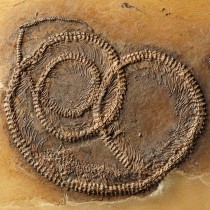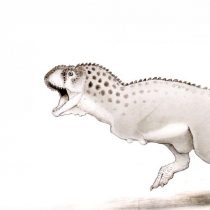It was a prehistoric clash of the ages that didn’t end pretty when a monster in the sky clashed with a beast of the deep.
The sorry outcome for one particular flying reptile is brutally recorded on a fossil where a shark chomped its neck, leaving a telltale tooth wedged against a vertebra. USC researchers who studied the bones kept at the Los Angeles County Natural History Museum say it’s a rare glimpse of wildlife interactions in the age of dinosaurs.
A window to a lost world, the findings help fill gaps about how a group of extinct flying creatures – pterosaurs – lived and behaved. The study appears in Peer J.
“Understanding the ecology of these animals is important to understanding life on Earth through time,” said the study’s senior author, Michael Habib, an assistant professor of integrative anatomical sciences at the Keck School of Medicine of USC and a research associate at the Natural History Museum.
“Are there sharks today that hunt seabirds? Yes, there are. Is that unique or have big sharks been hunting flying creatures for millions of years? The answer is yes, they have. We now know sharks were hunting flying animals as long ago as 80 million years.”
Fossil findings
In the late Cretaceous period, North America was divided by a giant waterway called the Western Interior Seaway. It was a biologically prolific region from the Gulf of Mexico to Canada. Some of the world’s best fossils from this time are found here, including the Smoky Hill Chalk region of Kansas, where this specimen was found.
The fossil was excavated in the 1960s and kept in storage at the museum before scientists plucked it from a display for further study. They were intrigued by the embedded shark tooth because of more than 1,100 specimens of Pteranodon, a species of pterosaur, only seven, or less than 1 percent, show evidence of predator-prey interaction, according to the study.





